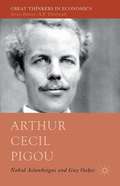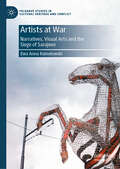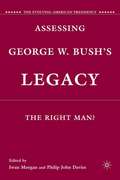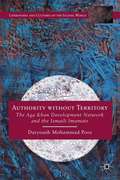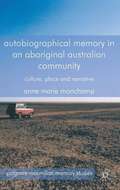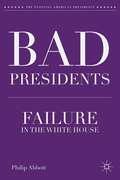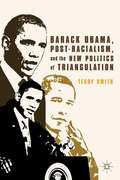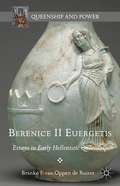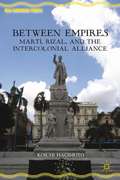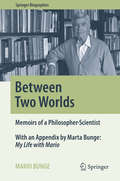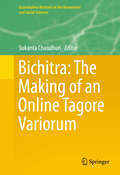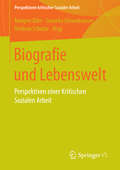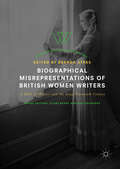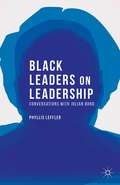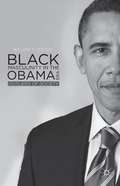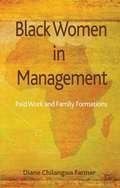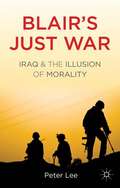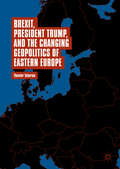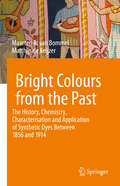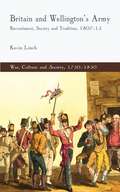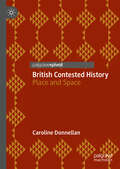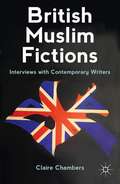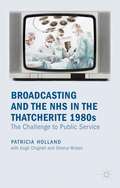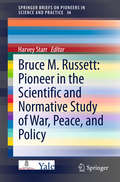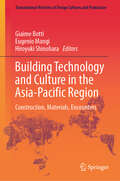- Table View
- List View
Arthur Cecil Pigou (Great Thinkers In Economics Ser.)
by Nahid Aslanbeigui Guy OakesThe British economist Arthur Cecil Pigou (1877-59) reconceptualized economics as a theory of economic welfare and a logic of policy analysis. Misconceptions of his work abound. This book, an essay in demystification and the first reading of the entire Pigouvian oeuvre, stresses his pragmatic and historicist premises.
Artists at War: Narratives, Visual Arts and the Siege of Sarajevo (Palgrave Studies in Cultural Heritage and Conflict)
by Ewa Anna KumelowskiThis book follows the lives of Sarajevan visual artists as they responded to the rising instability and political fragmentation that defined the last days of Yugoslavia&’s existence. Exploring how these artists understood and spoke about the onset of war, it places a focus on a series of recognizable discourses, touching upon notions of Yugoslav common culture, civilization and cultural resistance, which have since become synonymous with the memory of the siege of Sarajevo. This book hinges its central arguments on a microhistorical reading of this unique cultural community that existed simultaneously on the practical periphery of Yugoslav cultural developments and within the center of the state&’s fragmentation. In doing so, it offers a novel approach towards understanding the experiences of everyday life in besieged Sarajevo
Assessing George W. Bush’s Legacy
by Iwan Morgan Philip John DaviesThis book examines the legacy of the Bush presidency in term of presidential leadership, politics, and public policy. It focuses on Bush's expansion of presidential power in pursuit of the 'war on terror,' the ideological and pragmatic foundations of presidential politics, and the complexity of Bush's domestic and foreign policy legacies.
Authority Without Territory
by Daryoush Mohammad PoorExamining the connection between the concept of authority and the transformation of the Ismaili imamate, Authority without Territory is the first study of the imamate in contemporary times. With a particular focus on Aga Khan, the 49th hereditary leader of Shi'a Imami Ismaili Muslims, Daryoush Mohammad Poor shows how the Ismaili imamate surpasses the barriers and restrictions of the Weberian ideal-types and represents a novel image of a Shi'i Muslim community that has successfully adapted to modernity without losing its essential values or ethical commitments. Including interviews with key figures in the intellectual and administrative arms of the Ismaili imamate, this book sheds light on how these institutions develop and the challenges they face.
Autobiographical Memory in an Aboriginal Australian Community
by Anne Marie MonchampThis book shares and analyses the stories of Opal, a senior Alyawarra woman. Through her stories the reader glimpses the harsh colonial realities which many Aboriginal Australians have faced, highlighting the cultural embeddedness of autobiographical memory from a philosophical, psychological and anthropological perspective.
Bad Presidents
by Philip AbbottGeorge Washington, Abraham Lincoln, and Franklin Delano Roosevelt are always at the top of presidential rankings. But what about those presidents who consistently appear at or near the bottom of these lists? Based on the insights found in Shakespeare's treatment of two bad kings, Abbott identifies two kinds of bad presidents and examines the case for including eleven in this category. In each case study, from John Tyler to Richard Nixon (and possibly George W. Bush), he finds a tipping point that places them in this unenviable category. Abbott concludes by discussing why we elected these bad presidents in the first place and how we might avoid adding future bad presidents to the list.
Barack Obama, Post-racialism, And The New Politics Of Triangulation
by Terry SmithExamines black voters' relationship to the political process and to the first black president in a prematurely post-racial America using interviews with members of the Congressional Black Caucus, empirical data, news accounts, academic literature and case law.
Berenice II Euergetis
by Branko F. van Oppen de RuiterBerenice II Euergetis (ca. 267-6-221 BCE), one of the better known Ptolemaic queens, remains fairly unknown outside specialist circles. Berenice was queen at an important juncture in Hellenistic history. She was both the daughter of King Magas of Cyrene (modern day Libya) and wife to King Ptolemy III of Egypt. This collection of essays focuses on aspects of chronology, genealogy, and marital practices, as well as issues of royal ideology. The essays rely especially on literary evidence andart works in order to illuminate Berenice's status and position at the courts of Cyrene and Egypt. It offers new interpretations of the few known events of Berenice's life until the early reign of Ptolemy III, as well her influence and authority in Cyrene and Egypt.
Between Empires
by Koichi HagimotoIn 1898, both Cuba and the Philippines achieved their independence from Spain and then immediately became targets of US expansionism. This book presents a comparative analysis of late-nineteenth-century literature and history in Cuba and the Philippines, focusing on the writings of Jos#65533; Mart#65533; and Jos#65533; Rizal to reveal shared anti-imperial struggles.
Between Two Worlds: Memoirs of a Philosopher-Scientist (Springer Biographies)
by Mario BungeTo go through the pages of the Autobiography of Mario Bunge is to accompany him through dozens of countries and examine the intellectual, political, philosophical and scientific spheres of the last hundred years. It is an experience that oscillates between two different worlds: the different and the similar, the professional and the personal. It is an established fact that one of his great loves was, and still is, science. He has always been dedicated to scientific work, teaching, research, and training men and women in multiple disciplines. Life lessons fall like ripe fruit from this book, bringing us closer to a concept, a philosophical idea, a scientific digression, which had since been uncovered in numerous notes, articles or books. Bunge writes about the life experiences in this book with passion, naturalness and with a colloquial frankness, whether they be persecutions, banishment, imprisonment, successes, would-be losses, emotions, relationships, debates, impressions or opinions about people or things. In his pages we pass by the people with whom he shared a fruitful century of achievements and incredible depths of thought. Everything is remembered with sincerity and humor. This autobiography is, in truth, Bunge on Bunge, sharing everything that passes through the sieve of his memory, as he would say. Mario's many grandchildren are a testament to his proud standing as a family man, and at the age of 96 he gives us a book for everyone: for those who value the memories that hold the trauma of his life as well as for those who share his passion for science and culture. Also, perhaps, for some with whom he has had disagreements or controversy, for he still deserves recognition for being a staunch defender of his convictions.
Bichitra: The Making of an Online Tagore Variorum (Quantitative Methods in the Humanities and Social Sciences)
by Sukanta ChaudhuriThis book documents the creation of the Bichitra Online Tagore Variorum, a publicly accessible database of Rabindranath Tagore's complete works in Bengali and English totaling some 140,000 pages of primary material. Chapters cover innovative aspects of the site, all replicable in other projects: a hyperbibliography; a search engine and hyperconcordance working across the database; and a unique collation program comparing variant texts at three levels. There are also chapters on the special problems of processing manuscripts, and on planning the website. Early chapters take readers through the history of the project, an overview of Tagore's works, and the Bengali writing system with the challenges of adapting it to electronic form. The name Bichitra, meaning "various" in Bengali, alludes both to the great variety of Tagore's works and to their various stages of composition. Beyond their literary excellence, they are notable for their sheer quantity, the number of variant forms of a great many items, and their afterlife in translation, often the poet's own. Seldom if ever has the same writer revised his material and recast it across genres on such a scale. Tagore won the Nobel Prize in 1913. By its value-added presentation of this range of material, Bichitra can be a model for future databases covering an author's complete works or other major corpus of texts. It offers vastly expanded access to Tagore's writings, and enables new kinds of research including computational text analysis. The "book of the website" shows in technical and human terms how researchers with interests in art, literature and technology can collaborate on cultural informatics projects.
Biografie und Lebenswelt: Perspektiven einer Kritischen Sozialen Arbeit (Perspektiven kritischer Sozialer Arbeit #20)
by Margret Dörr Cornelia Füssenhäuser Heidrun SchulzeBiografie und Lebenswelt gelten als zentrale Fachbegriffe innerhalb der Sozialen Arbeit, die gleichermaßen für Theorie, Praxis und Forschung bedeutsam sind. In theoretischer und empirischer Weise werden in dem Sammelband die theoretischen Zugänge zu Biografie und Lebenswelt in unterschiedlichen Positionierungen hinsichtlich ihres Potentials für eine Kritische Soziale Arbeit diskutiert und aufgeschlossen. Weitere Fragen in diesem Spektrum lauten: In welcher Weise haben unterschiedliche und möglicherweise auch konkurrierende Perspektiven auf Lebenswelt und Biografie (oftmals unreflektiert) Einfluss auf die Rekonstruktion sozialer Wirklichkeiten? Wie kann Forschung - als ein machtvoller intersubjektiver Prozess - betrachtet werden - und wie können hierbei auch die selbsterzeugten Blindstellen Sozialer Arbeit in den Fokus genommen werden?
Biographical Misrepresentations of British Women Writers: A Hall of Mirrors and the Long Nineteenth Century (Palgrave Studies in Life Writing)
by Brenda AyresThis book is an investigation of the biases, contradictions, errors, ambiguities, gaps, and historical contexts in biographies of controversial British women who published during the long nineteenth century, many of them left unchecked and perpetuated from publication to publication. Fourteen scholars analyze the agenda, problems, and strengths of biographical material, highlighting the flaws, deficiencies, and influences that have distorted the portraits of women such as Lady Mary Wortley Montagu, Mary Wollstonecraft, Mary Hays, Sydney Owenson, Letitia Elizabeth Landon, Felicia Hemans, Elizabeth Barrett Browning, Caroline Norton, Elizabeth Gaskell, Charlotte Bront#65533;, Lady Florence Dixie, George Eliot, and Edith Simcox. Through exposing distortions, this fascinating study demonstrates that biographies are often more about the biographer than they are about the biographee and that they are products of the time in which they are written.
Black Leaders On Leadership
by Phyllis LefflerDrawing on a wealth of oral interviews, Conversations on Black Leadership uses the lives of prominent African Americans to trace the contours of Black leadership in America. Included here are fascinating accounts from a wide variety of figures such as John Lewis, Clarence Thomas, Eleanor Holmes Norton, Angela Davis, Amiri Baraka, and many more.
Black Masculinity In The Obama Era
by William T. HostonBlack Masculinity in the Obama Era provides an in-depth examination of the current state of black males and identifies the impact of living in the Obama era. In the era of the first black president, Barack H. Obama, this book gauges the status of black masculinity and provokes discourse to discover whether his election and presence has had an influential impact on black male achievement. A purposeful sample of black males was asked, what does it mean to be a black male in the 21st century? Throughout the interviews with black males, we learn that the 'Obama Effect' has not had the intended impact on black male achievement and black males continue to be plagued by structural and cultural forces that have historically burdened their plight and level of achievement.
Black Women in Management
by Diane Chilangwa FarmerBlack Women in Management identifies some of the differences and/or similarities that exist between these women's career choices and progression and explores how they address socio-cultural and gendered expectations of domestic, social and caring commitments as career women living and working in two urban cities - one African, the other European.
Blair’s Just War
by Peter LeeBringing together both contemporary and historical just war concepts, Peter Lee shows that Blair's illusion of morality evaporated quickly and irretrievably after the 2003 Iraqinvasion because the ideas Blair relied upon were taken out of their historical context and applied in a global political system where they no longer hold sway.
Brexit, President Trump, and the Changing Geopolitics of Eastern Europe
by Theodor TudoroiuThis book analyzes the combined consequences of Brexit and of the new US foreign policy under President Trump on the geopolitical situation of Eastern Europe. It perceives the evolution of the East European regional security complex as a struggle between the European Union's Kantian, win-win geopolitical vision and Russia's neoclassical geopolitics, also promoted by President Trump. In the most probable scenario, the latter approach will have the upper hand. The EU's post-Brexit control by the Franco-German axis will likely be followed by the geopolitical irrelevance of the EU due to the renationalization of member states' foreign policy, with Germany becoming the main West European actor. Consequently, Eastern Europe will be turned into the arena of a mainly three-cornered neoclassical geopolitics rivalry opposing Russia, the Franco-German axis and then Germany, and the US in alliance with the post-Brexit UK and certain East European states. The book will appeal to scholars across the fields of International Relations, Geopolitics, European Studies, and Area Studies.
Bright Colours from the Past: The History, Chemistry, Characterisation and Application of Synthetic Dyes Between 1856 and 1914 (Cultural Heritage Science)
by Matthijs de Keijzer Maarten R. van BommelThe invention of Mauveine by Perkin in 1856 led to a revolution in the world of textile dyeing. In the second half of the 19th century, natural dyes were quickly replaced by newly developed synthetic dyes which resulted in a bright palette of colours. The synthetic dyes were not only cheaper to produce, but also easier to apply on textiles due to new dyeing mechanisms. As a result, production costs decreased tremendously and brilliantly dyed textiles became available to the larger public. The introduction of synthetic dyes had a strong impact in fashion; in addition, these colourants were also used as stains on furniture, as inks and in paints. In this publication, the development of these vivid colourants is presented. It brings together information about the history of synthetic dyes, including the first attempts, the so-called semi-synthetic dyes, and presenting the most relevant dyes and dye classes, such as nitro dyes, tri-arylmethanes, azo dyes, xanthenes, sulfur dyes, synthetic alizarin and synthetic indigo. It contains a wealth of information regarding the numerous synonyms, trade names, manufacturers and patents. International trade and competition, which was fierce, are discussed. The chemistry behind the synthetic dyeing is explained, including new dyeing technologies developed. The application of dyes and their fastness properties are also presented. An overview of analytical techniques used for characterisation is given. Many case studies are included, expressing the importance of the dyes and the creativity of mankind when applying these colourants. As such, this publication can be seen as a colourful journey through history, relevant for conservators, curators, historians, chemists and all who are interested in the history and development of synthetic dyes.
Britain and Wellington�s Army
by Kevin LinchBritain was France's most implacable enemy during the Napoleonic Wars yet was able to resist the need for conscription to fill the ranks of its army and sustain Wellington's campaigns in Portugal and Spain. This new study explains how the men were found to replenish Wellington's army, and the consequences on Britain's government, army and society.
British Contested History: Place and Space
by Caroline DonnellanThis book examines the issues arising from British contested history by looking at how it came to be constructed, how it developed, and how attitudes over time have begun to change towards it. It considers how this narrative was first created through the writing of British history. It explores the private spaces of the court, the political places of the state, and the public places of the street. Beyond British shores this history has also been enacted through international heritage sites when objects were removed and taken back to Britain. Conclusively, it explores how the historic spaces of a maritime city, has further entrenched an already complex history of the nation. How this research brings new insights into this field is by looking at it through the lens of place, space, and the spatial turn. The underlining research questions are: What role does place and space play in historical constructions of the past? How do place and space contribute to contested history? How can these places and spaces be re-appropriated and reused, and endowed with new meanings?
British Muslim Fictions
by Claire ChambersThrough interviews with leading writers (including Ahdaf Soueif and Hanif Kureishi), this book analyzes the writing and opinions of novelists of Muslim heritage based in the UK. Discussion centres on writers' work, literary techniques, and influences, and on their views of such issues as the hijab, the war on terror and the Rushdie Affair.
Broadcasting and the NHS in the Thatcherite 1980s
by Hugh Chignell Patricia Holland Sherryl WilsonPatricia Holland offers a fascinating study of the ways in which changes to public services, and shifts in the concept of 'the public' under Margaret Thatcher's three Conservative governments, were mediated by radio and television in the 1980s.
Bruce M. Russett: Pioneer in the Scientific and Normative Study of War, Peace, and Policy (SpringerBriefs on Pioneers in Science and Practice #34)
by Harvey StarrThis book provides a comprehensive treatment of Russett's scientific contributions, with key examples of his major studies. It will greatly benefit today's International Relations students, deepening their understanding of the field's theory and methods. Bruce M. Russett was a founder of, and continues to be a pioneer in, the empirical analytical study of international relations and foreign policy. He has produced groundbreaking works on methodology, data collection and the application of economics to the field of international relations--especially in the area of analytical relationships between theory, policy and normative standards for morality and ethics. His body of work has clarified and furthered our understanding of peace studies by addressing power and conflict, cooperation, integration and community, democratic/Kantian peace, economic development, dependency and inequality, and the relationships between domestic and foreign politics. Russett's academic achievements and standing are the result of his bringing these areas together as a coherent entity, based on his eclectic ability to "cross boundaries" with regard to academic disciplines, sub-disciplines, methods of data gathering and analysis, and broad theoretical perspectives, as well as basic and applied research.
Building Technology and Culture in the Asia-Pacific Region: Construction, Materials, Encounters (Transnational Histories of Design Cultures and Production)
by Giaime Botti Eugenio Mangi Hiroyuki ShinoharaThis book compiles a curated selection of texts authored by architects and scholars hailing from Asia, Europe, and North America. Their research, often intertwined with practical applications, delves into the intricate relationship between material culture, technology, and architecture within the broader cultural and social milieu. Three keywords—construction, materials, encounters—serve as the organizing framework for the book, guiding readers through a diverse array of case studies and experiences where these elements intertwine seamlessly. Indeed, these terms are intricately interwoven, reflecting the inseparability of technology from culture.The first part of the book delves into the poetics and theoretical underpinnings of construction, drawing from the works of various designers across China, Japan, and India. The subsequent section navigates the terrain of construction materials, exploring their evolution, manufacturing processes, and utilization, with a particular focus on diverse timber products and bamboo. The final part of this compilation embarks on a journey through historical encounters between the East and West spanning over a century. It meticulously investigates the exchanges, misunderstandings, and innovations catalyzed by these interactions. Collectively, these texts offer a profound and original perspective on the myriad experiences and challenges associated with the intricate interplay between technological advancements, tectonic preferences, and socio-cultural dynamics within the architectural landscape of the Asia-Pacific region.
